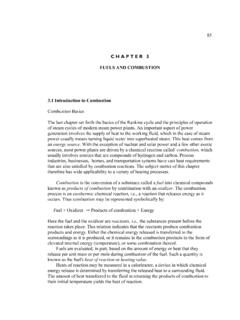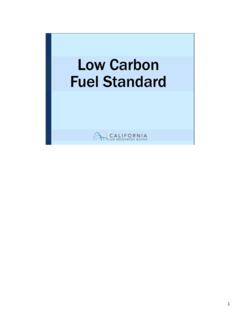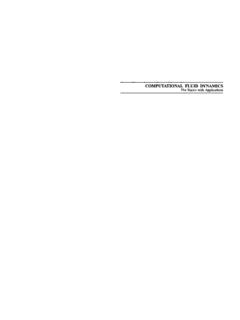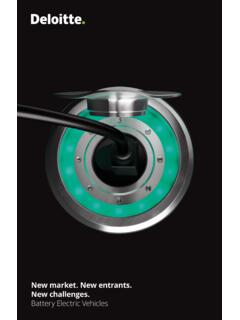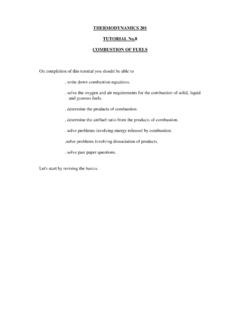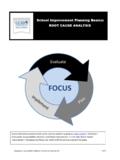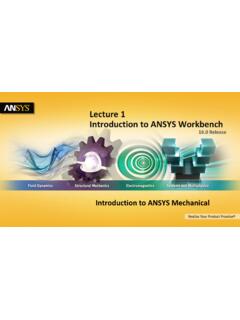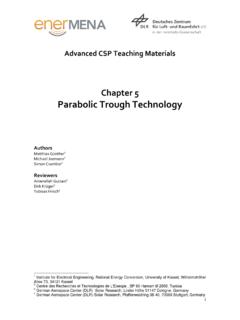Transcription of Section Five Courses - catalog.caltech.edu
1 Section Five Courses 456. Courses Courses numbered below 100 are taken primarily by undergraduate students. Those numbered from 100 to 199 are taken by both undergraduates and graduates, and those numbered 200 and above are taken primarily by graduate students. The school year is divided into three terms. The number of units assigned in any term to any subject represents the number of hours spent in class, in laboratory, and estimated to be spent in preparation per week. In the following schedules, figures in parentheses denote hours in class (first figure), hours in laboratory (second figure), and hours of outside preparation (third figure).
2 At the end of the seventh week of each term, a list of Courses to be offered the following term is published by the Registrar's Office. On the day of registration (see Academic Calendar), an updated and revised course schedule is published announc- ing the Courses , class hours, and room assignments for the term. Students may not schedule two Courses taught at the same time. Abbreviations Ae Aerospace FS Freshman Seminars AN Anthropology Ge Geological and ACM Applied and Planetary Sciences Computational H History Mathematics HPS History and Philosophy AM Applied Mechanics of Science APh Applied Physics Hum Humanities Art Art History IDS Information and Data Ay Astrophysics Sciences BMB Biochemistry and IST Information Science Molecular Biophysics and Technology BE Bioengineering ISP Interdisciplinary Bi Biology Studies Program BEM Business.
3 Economics L Languages and Management Law Law ChE Chemical Engineering MS Materials Science Ch Chemistry Ma Mathematics CE Civil Engineering ME Mechanical CNS Computation and Engineering Neural Systems MedE Medical Engineering CS Computer Science Mu Music CMS Computing and NB Neurobiology Mathematical PVA Performing and Visual Sciences Arts 457. CDS Control and Pl Philosophy Dynamical Systems PE Physical Education Ec Economics Ph Physics EE Electrical Engineering PS Political Science EST Energy Science and Psy Psychology Technology SEC Scientific and E Engineering (General) Engineering En English Communication ESL English As a Second SS Social Science Language SA Student Activities ESE Environmental Science VC Visual Culture and Engineering Wr Writing F Film AEROSPACE.
4 Ae 100. Research in Aerospace. Units to be arranged in accordance with work accomplished. Open to suitably qualified undergraduates and first-year graduate students under the direction of the staff. Credit is based on the satisfactory completion of a substantive research report, which must be approved by the Ae 100 adviser and by the option representative. Ae/APh/CE/ME 101 abc. Fluid Mechanics. 9 units (3-0-6); first, second, third terms. Prerequisites: APh 17 or ME 11 abc, and ME 12 or equivalent, ACM 95/100 or equivalent (may be taken concurrently). Fun- damentals of fluid mechanics.
5 Microscopic and macroscopic properties of liquids and gases; the continuum hypothesis; review of thermody- namics; general equations of motion; kinematics; stresses; constitutive relations; vorticity, circulation; Bernoulli's equation; potential flow; thin- airfoil theory; surface gravity waves; buoyancy-driven flows; rotating flows; viscous creeping flow; viscous boundary layers; introduction to stability and turbulence; quasi one-dimensional compressible flow;. shock waves; unsteady compressible flow; and acoustics. Instructors: Pullin, Austin, Colonius. Ae/AM/CE/ME 102 abc.
6 Mechanics of Structures and Solids. 9 units (3-0-6); first, second, third terms. Prerequisites: ME 12 abc. Introduction to continuum mechanics: kinematics, balance laws, constitutive laws with an emphasis on solids. Static and dynamic stress analysis . Two- and three-dimensional theory of stressed elastic solids. Wave propaga- tion. analysis of rods, plates and shells with applications in a variety of fields. Variational theorems and approximate solutions. Elastic stability. Instructors: Rosakis, Ravichandran. Ae 103 ab. Aerospace Control Systems. 9 units (3-0-6); second and third terms.
7 Prerequisites: CDS 110 (or equivalent), CDS 131 or permis- sion of instructor. Part a: Optimization-based design of control systems, including optimal control and receding horizon control. Introductory random processes and optimal estimation. Kalman filtering and nonlin- ear filtering methods for autonomous systems. Part b: Nonlinear control 458 design for aerospace systems, flight dynamics, and attitude dynamics. Guidance, navigation, and control of autonomous aerospace systems. Instructor: Murray Ae/APh 104 abc. Experimental Methods. 9 units (3- 0-6) first term; (0-6-3) second, third terms.
8 Prerequisites: ACM 95/100. ab or equivalent (may be taken concurrently), Ae/APh/CE/ME 101 abc or equivalent (may be taken concurrently). Lectures on experiment design and implementation. Measurement methods, transducer fundamen- tals, instrumentation, optical systems, signal processing, noise theory, analog and digital electronic fundamentals, with data acquisition and processing systems. Experiments (second and third terms) in solid and fluid mechanics with emphasis on current research methods. Instructor: Murray Courses Ae/APh 104 abc. Experimental Methods. 9 units (3-0-6) first term.
9 (0-6-3) second, third terms. Prerequisites: ACM 95/100 ab or equivalent (may be taken concurrently), Ae/APh/CE/ME 101 abc or equivalent (may be taken concurrently). Lectures on experiment design and implementa- tion. Measurement methods, transducer fundamentals, instrumentation, optical systems, signal processing, noise theory, analog and digital electronic fundamentals, with data acquisition and processing systems. Experiments (second and third terms) in solid and fluid mechanics with emphasis on current research methods. Instructor: McKeon. Ae 105 abc. Space Engineering.
10 9 units (3-0-6) first term, (2-4-3) sec- ond term, (0-8-1) third term; first, second, third terms. Prerequisites: ME. 11 abc and ME 12 abc or equivalent. Part a: Design of space missions based on astrodynamics. Topics include conic orbits with perturbations (J2, drag, and solar radiation pressure), Lambert's Theorem, periodic orbits and ground tracks, invariant manifolds, and the variational equation with mission applications to planetary flybys, constellation, formation flying, and low energy planetary capture and landing. Part b: Introduction to spacecraft systems and subsystems, mission design, rocket mechanics, launch vehicles, and space environments; spacecraft mechanical, structural, and thermal design; communication and power systems; preliminary discussion and setup for team project leading to system requirements review.
